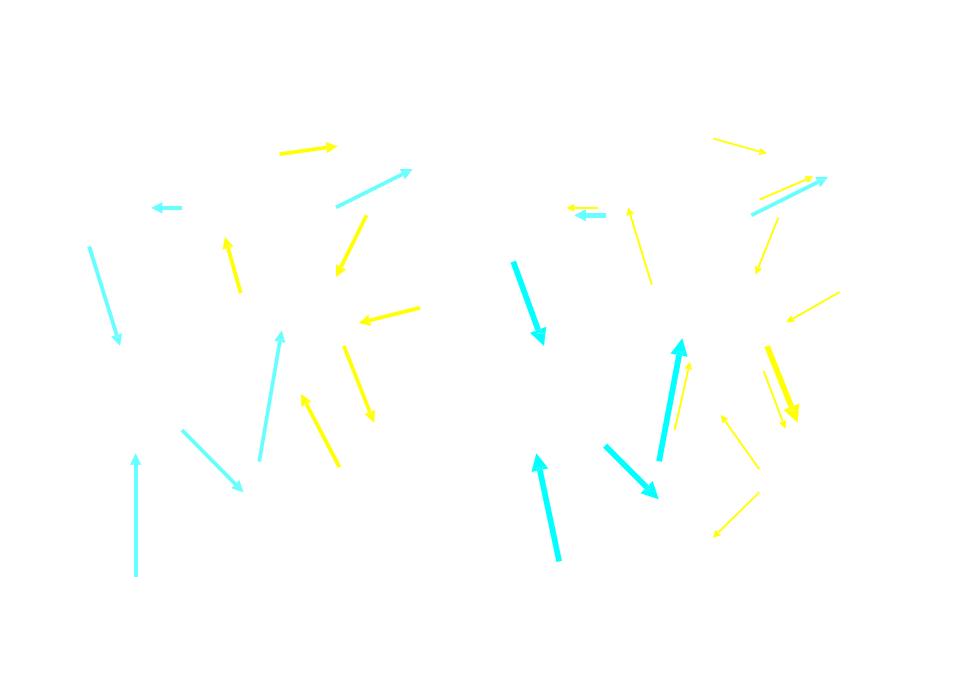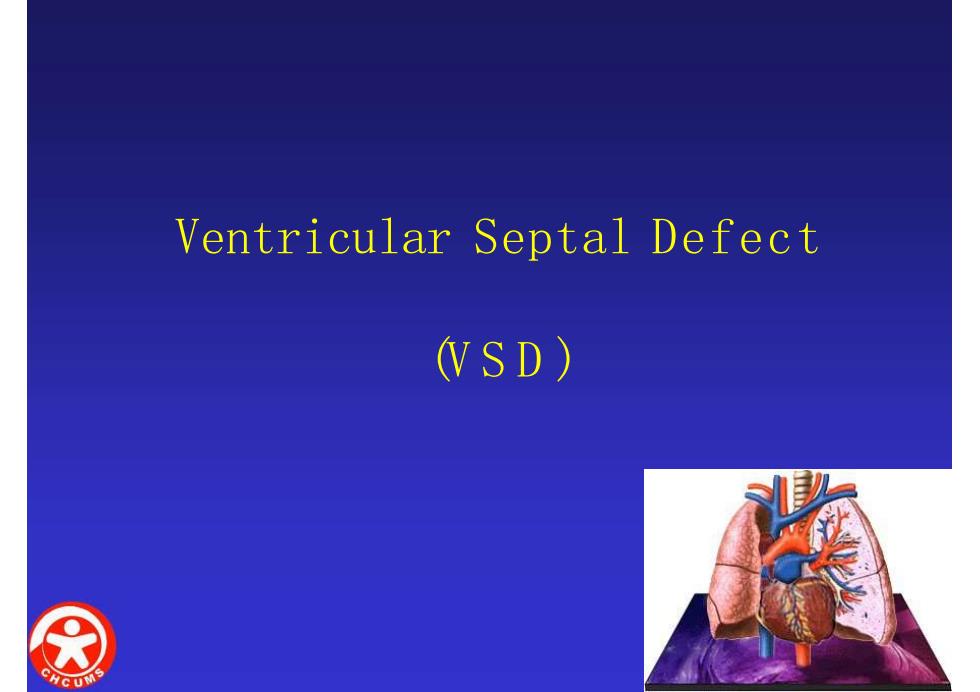
Ventricular Septal Defect(VSD)
Ventricular Septal Defect (V S D )
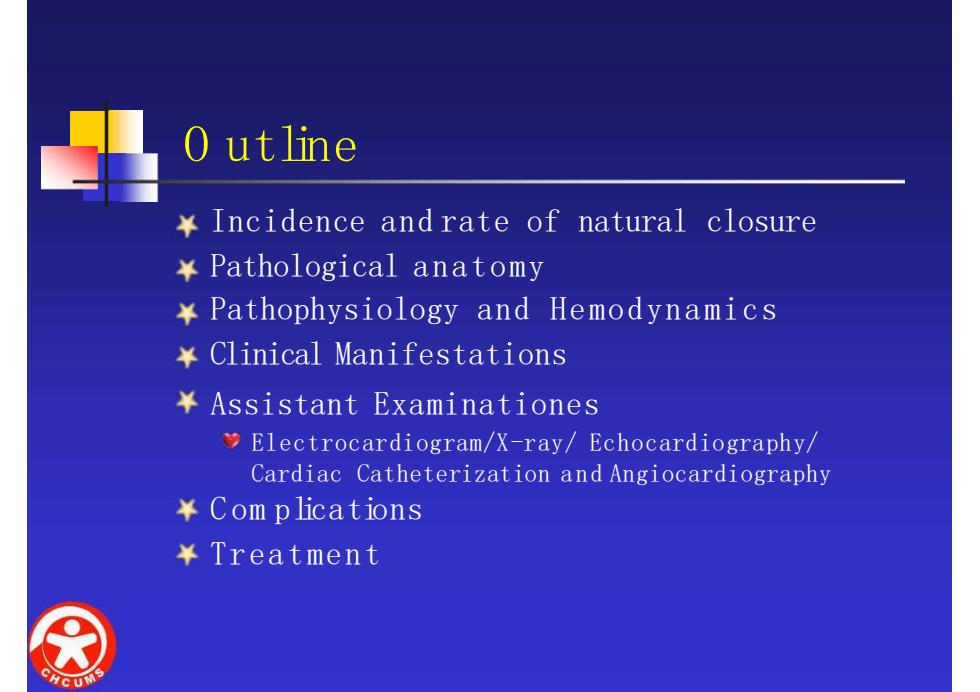
O utlineIncidence andrate of natural closure?Pathological anatomyPathophysiologyand HemodynamicsClinicalManifestationsAssistant ExaminationesElectrocardiogram/X-ray/Echocardiography/Cardiac Catheterization and AngiocardiographyComplications?Treatment
O utline Incidence and rate of natural closure Pathological anatomy Pathophysiology and Hemodynamics Clinical Manifestations Assistant Examinationes Electrocardiogram/X-ray/ Echocardiography/ Cardiac Catheterization and Angiocardiography C om plications Treatment
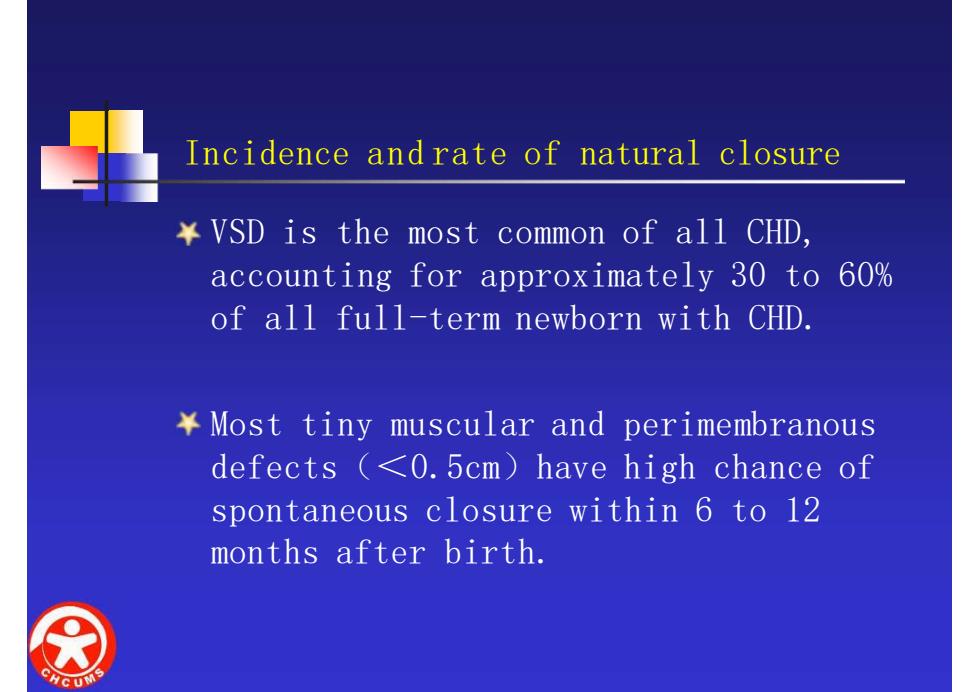
Incidence andrate of natural closureVSDisthemostcommonofall CHDaccounting for approximately 30 to 60%of all full-term newborn with CHD.Most tiny muscular and perimembranousdefects(<0.5cm) havehigh chance ofspontaneous closure within 6 to 12months after birth
Incidence and rate of natural closure VSD is the most common of all CHD, accounting for approximately 30 to 60% of all full-term newborn with CHD. Most tiny muscular and perimembranous defects(<0.5cm)have high chance of spontaneous closure within 6 to 12 months after birth
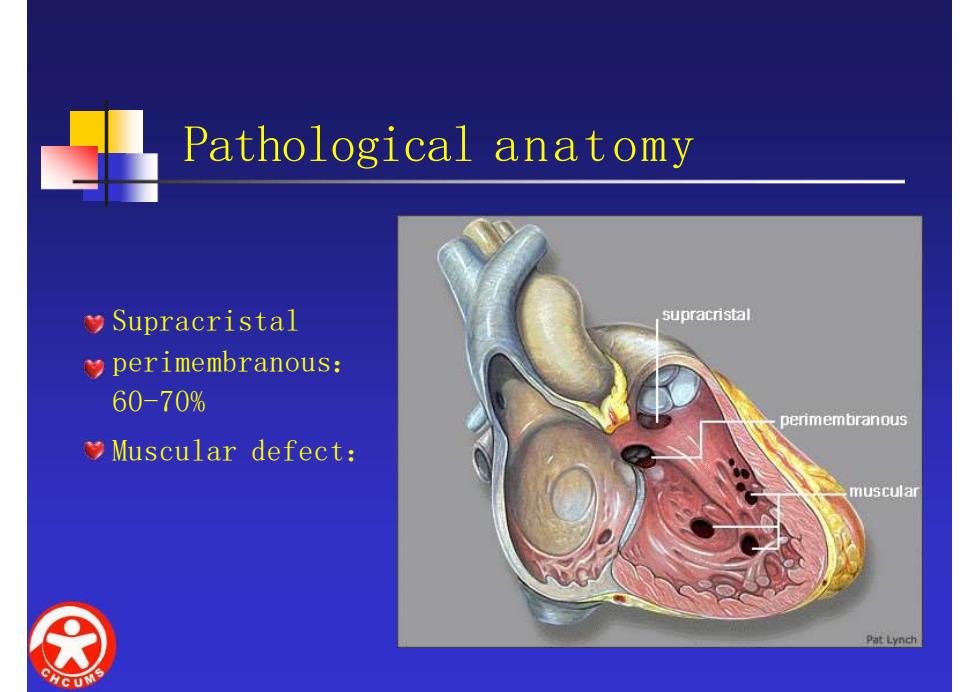
Pathological anatomysupracristalSupracristalperimembranous:60-70%benimembranousMuscular defect:muscular
Pathological anatomy Supracristal perimembranous: 60-70% Muscular defect:
